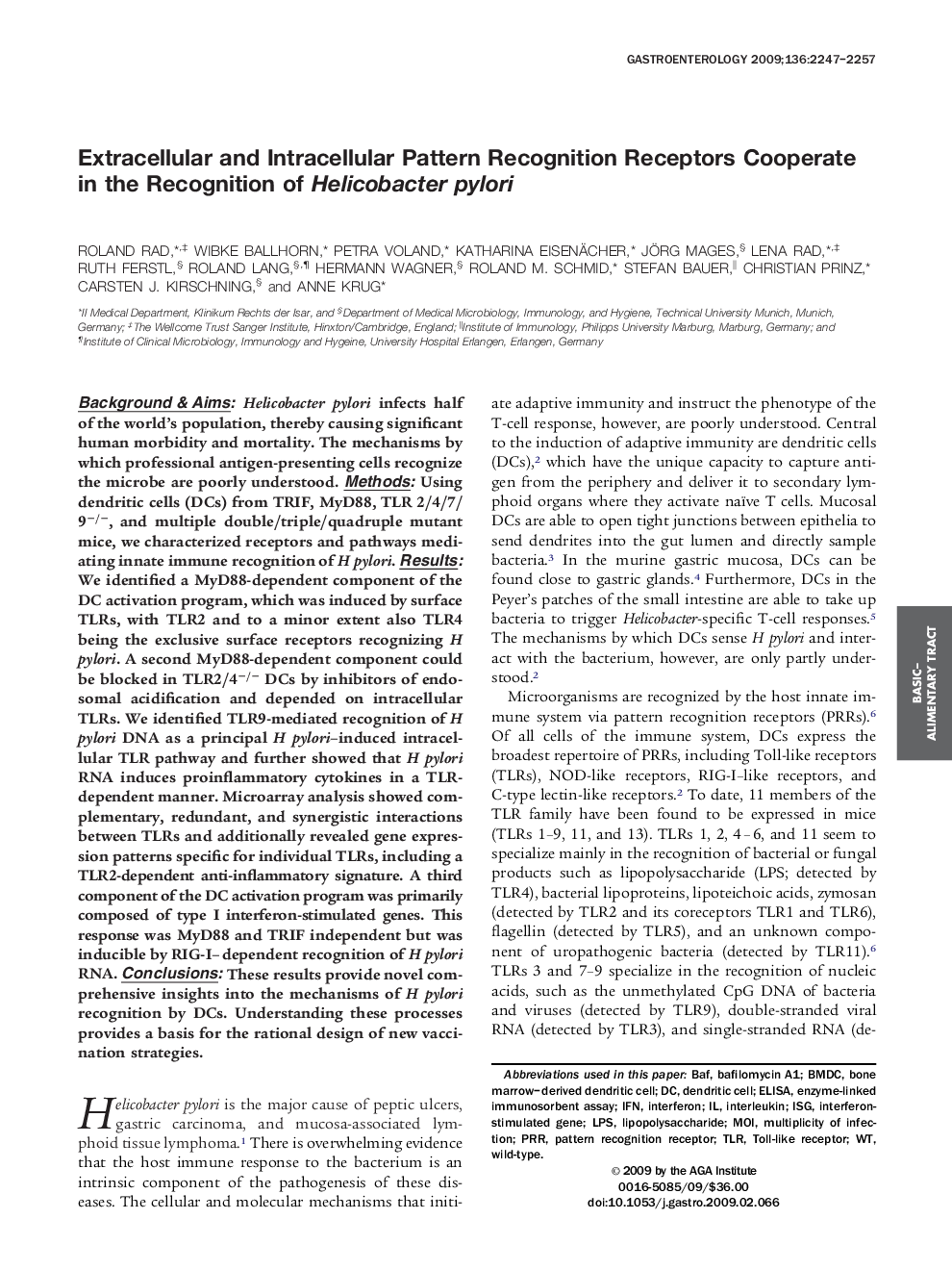| Article ID | Journal | Published Year | Pages | File Type |
|---|---|---|---|---|
| 3297327 | Gastroenterology | 2009 | 11 Pages |
Background & AimsHelicobacter pylori infects half of the world's population, thereby causing significant human morbidity and mortality. The mechanisms by which professional antigen-presenting cells recognize the microbe are poorly understood.MethodsUsing dendritic cells (DCs) from TRIF, MyD88, TLR 2/4/7/9−/−, and multiple double/triple/quadruple mutant mice, we characterized receptors and pathways mediating innate immune recognition of H pylori.ResultsWe identified a MyD88-dependent component of the DC activation program, which was induced by surface TLRs, with TLR2 and to a minor extent also TLR4 being the exclusive surface receptors recognizing H pylori. A second MyD88-dependent component could be blocked in TLR2/4−/− DCs by inhibitors of endosomal acidification and depended on intracellular TLRs. We identified TLR9-mediated recognition of H pylori DNA as a principal H pylori–induced intracellular TLR pathway and further showed that H pylori RNA induces proinflammatory cytokines in a TLR-dependent manner. Microarray analysis showed complementary, redundant, and synergistic interactions between TLRs and additionally revealed gene expression patterns specific for individual TLRs, including a TLR2-dependent anti-inflammatory signature. A third component of the DC activation program was primarily composed of type I interferon-stimulated genes. This response was MyD88 and TRIF independent but was inducible by RIG-I–dependent recognition of H pylori RNA.ConclusionsThese results provide novel comprehensive insights into the mechanisms of H pylori recognition by DCs. Understanding these processes provides a basis for the rational design of new vaccination strategies.
